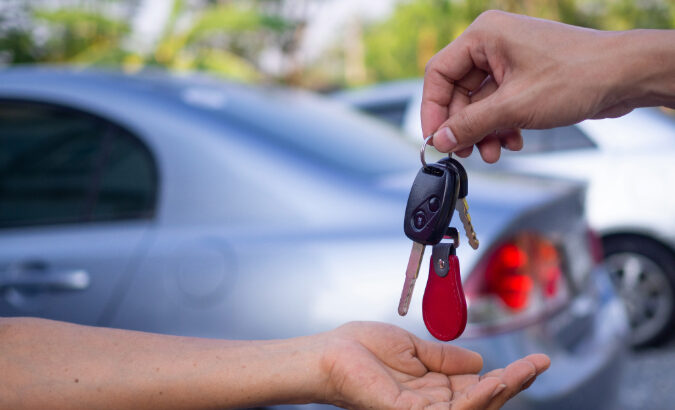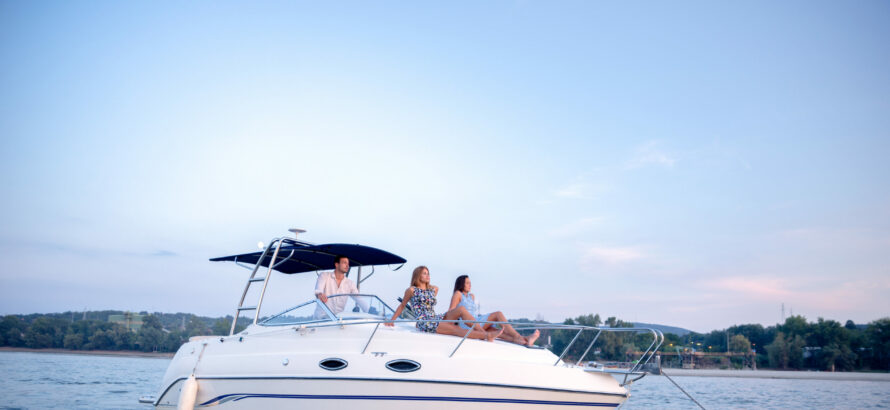
Even though roundabouts are more common in European countries, they are growing in popularity everywhere in the United States, especially in cities that want to increase traffic flow and prevent clogs at popular intersections. If you haven’t driven through a roundabout before, it can be confusing. That’s why it is essential to familiarize yourself with them so you can move around them safely. [1]
What is a roundabout?
A roundabout is a circular-shaped intersection where drivers move counterclockwise around a center point. There aren’t any traffic signals or stop signs. Instead, every driver yields at the entry of the roundabout to other traffic. Once you’ve entered the roundabout, you may enter the intersection and exit at your desired street. The Federal Highway Administration studied roundabouts and found they can increase traffic capacity by as much as 50 percent compared to more traditional intersections. [2]
What are the differences between roundabouts and traffic circles?
Although most people believe roundabouts and traffic circles are the same, the two have distinct differences. Traffic circles often have stop signs or traffic signals within the circle’s intersection. To enter the traffic circle, vehicles enter in a straight line. Vehicles in the circle have the right of way, while vehicles approaching and attempting to enter must yield to vehicles already in the circle. Traffic circles are designed to allow vehicles to enter and circulate at higher speeds, and they are typically much larger than roundabouts.
The roundabout is designed to provide more positive direction to motorists as they approach, enter and exit the roundabout. The entrances are tapered, so the vehicles don’t enter the roundabout at 90 degrees. Traffic speeds are lower compared with a traffic circle. In a roundabout, the entry points are yield-controlled, which prevents traffic from locking up and allows the free flow of vehicles. [3]
Top 7 tips for driving in a roundabout
- Slow down. Pay close attention to the change in speed limit around the roundabout and decrease your speed when approaching the entrance. Going slower allows you more time to make decisions and be better prepared to yield to other road users.
- Yield. Look around as you approach the roundabout. Yield to the drivers already in the roundabout and pedestrians and bicyclists in the surrounding area.
- Choose the right lane. If there is more than one lane, use the left lane to turn left, the right lane to turn right and all lanes to go through, unless directed otherwise by signs and pavement markings. Make sure to use your indicator to let all cars in the roundabout know where you are going.
- Don’t drive next to large vehicles. Always assume trucks and larger vehicles need all available space. Therefore, do not pass them or drive close to them.
- Do not stop. Once you’ve entered the roundabout successfully, do not stop. If you miss your exit, continue driving in the roundabout until you have circled and reached your exit again.
- Stay in your lane. Do not change lanes within the roundabout. Instead, stay in the lane that you entered in and use your right turn signal to indicate your intention to exit.
- Let emergency vehicles pass. Make sure to clear the roundabout to allow emergency vehicles to pass. [1]
Benefits of using a roundabout
Compared with other types of intersections, roundabouts have demonstrated many benefits. Roundabouts:
- Improve safety: Slower speeds are generally safer for pedestrians. In addition, head-on, and high-speed right-angle collisions are virtually eliminated.
- Reduce congestion: They make traffic efficient during peak hours and other times. Typically, there’s less of a delay.
- Reduce pollution and fuel use: Fewer stops and hard accelerations mean less time idling.
- Save money: There’s no signal equipment to install and maintain. Smaller roundabouts may require less right-of-way than traditional intersections. Often less pavement is needed. [4]
What else should you know about roundabouts?
Studies by the Federal Highway Administration suggest that roundabouts can improve traffic capacity by 30% to 50%. They can reduce overall collisions by 37%, injury collisions by 75%, fatal collisions by 90% and pedestrian collisions by 40%. Although the public tends to fear roundabouts when they are first introduced, the approval rate doubles once drivers get used to them. If you are concerned about your ability to successfully navigate a roundabout, consider taking an adult driver’s ed lesson to refresh your skills. [1]
With all this knowledge, now you can take to the road and successfully navigate roundabouts with ease. While on the road, ensure that your vehicle and you are protected with auto insurance.
Sources:
[1] “What Is a Roundabout and How Do I Drive Through One?” driversed.com/trending/what-roundabout-and-how-do-i-drive-through-one (Nov. 16, 2021).
[2] “How to Drive in a Roundabout: A Helpful Guide,” drivesafeonline.org/traffic-school/how-to-drive-in-a-roundabout (March 24, 2020).
[3] “Traffic Circles & Roundabouts,” Gordon Meth, robsonforensic.com/articles/traffic-circles-roundabouts-expert-article (June 4, 2013).
[4] “Roundabouts: A Safer Choice,” highways.dot.gov/sites/fhwa.dot.gov/files/2022-06/fhwasa08006.pdf (accessed Feb. 2, 2023).
Disclaimer:
The information included here is designed for informational purposes only. It is not legal, tax, financial or any other sort of advice, nor is it a substitute for such advice. The information may not apply to your specific situation. We have tried to make sure the information is accurate, but it could be outdated or even inaccurate in parts. It is the reader’s responsibility to comply with any applicable local, state or federal regulations. Nationwide Mutual Insurance Company, its affiliates and their employees make no warranties about the information nor guarantee of results, and they assume no liability in connection with the information provided. Nationwide and the Nationwide N and Eagle are service marks of Nationwide Mutual Insurance Company. © 2023 Nationwide



